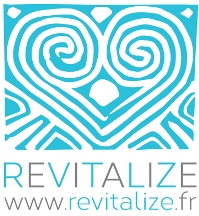Lower Stress With Better Breathing

As we enter the yachting season in the Med, whether you’re working on a busy charter yacht or based in an office, we all know stress can take its toll on our health and sense of wellbeing. But if we can’t reduce the workload, we can at least adopt healthy habits to reduce our stress and the simplest and most effective strategy concerns the way we breathe.
Breathing happens all by itself, day and night, 24/7. However, respiration is one of the few body systems that we can consciously alter.
Even so, in the course of our busy lives we are almost never conscious of our breath which, when you think about it, is kind of crazy. If we don’t breathe, we die, and pretty quickly too!
In a stressful situation a 'fight or flight' response kicks in, the breath naturally constricts as we prepare to run away from a threat or danger. Thousands of years ago this was essential for survival, though in this day and age less threatening things such as traffic jams or constant messages or phone calls are common causes of stress.
 In fact, anything that places demands on us or requires our urgent attention can create high levels of tension in the body and mind. The problem is that over the course of our lives we can adopt unhealthy breathing habits even after our stress has subsided.
In fact, anything that places demands on us or requires our urgent attention can create high levels of tension in the body and mind. The problem is that over the course of our lives we can adopt unhealthy breathing habits even after our stress has subsided.
In fight or flight mode the body is flooded with stress hormones such as adrenalin and cortisol which raise the blood pressure, quicken the breath and prepare the body for action. In small doses stress isn’t bad for us as it helps us to perform under pressure and can save our life in an emergency situation. However, if we stay in this state for too long we can burn out and it can lead to a multitude of health problems.
Quickening of the breath generally leads to habitual shallow breathing, including breathing through the mouth, which exacerbates this state of stress keeping the body in a state of high alert.
Shifting from 'fight or flight’ into 'rest and repair'
The answer lies within our breath, firstly in having a simple awareness of breath and, in particular, using a technique that I call slow release breathing which has a calming effect on the body and mind.
And the good news is it can take just 90 seconds of slow release breathing to switch from a state of fight or flight into rest and repair. By learning to take a full in-breath and out-breath (both through the nose) we begin to slow down our breathing which cleanses and nourishes the body and enables this all-important shift in the nervous system. In other words it brings the nervous system back into balance.
How do I do slow release breathing?
First of all it’s helpful to look at how we breathe. The act of inhaling happens when the diaphragm, which is a domed layer of muscle located between the chest and the abdomen, contracts downwards becoming flat, creating a vacuum which draws breath down into the lungs. To exhale the muscle relaxes back up to its domed position and the breath is pushed up and out of the lungs.

Are you a Reverse Breather?
Most people are not aware of the direction in which the diaphragm should naturally move (down to inhale and up to exhale) and are therefore known as ‘Reverse Breathers’. If you think about it, if you mistakenly draw the diaphragm UP to inhale you’re minimising the available space for breath in the lungs.
If you’ve spent years being a reverse breather without realising it, it may take a bit of practice to adopt a new healthier breathing pattern.
Here’s an easy-to-learn slow release breathing technique:
1) Lie on your back with your legs bent and knees resting together so the spine is relaxed. Draw the chin slightly inwards so your neck is lengthened.
2) Place your hands onto the sides of your rib cage and start to breathe in through the nose and down into the sides of your ribs. Feel your hands expanding as you breathe in and feel the rib cage relaxing as you breathe out through the nose. Get comfortable with the sensation of expansion through the front, side and back ribs as you inhale.

3) Start to become aware of the downwards movement of the inhale.
4) Move your hands onto your abdomen and start to breathe into your hands as they rest on the belly. Try to allow the abdomen to gently rise on the inhale. On the exhale the belly will fall all by itself without any need to push or force the breath. By practising this technique you’ll begin to train the diaphragm to move in the correct direction for a healthy breath (down on the in-breath and up on the out-breath).

5) Try to follow the pathway of the breath with your mind, into the nostrils, down the throat, down into the lungs and visualise the movement going down into the belly. As you exhale follow the upward movement of the breath as it moves up and out of the nose. Take your time and don’t rush the breath cycle.
TIP: If you find you can’t take a full in-breath because you’re so stressed, try taking just a half inhale and then exhale as fully and as slowly as possible until you feel empty. This will allow you to take a fuller and fuller in-breath through successive breathing cycles. Try and avoid the temptation to force the breath, slow and steady wins this race.
3 - Part Breathing
Once you’ve got the hang of the slow release breath, take it a step further by doing 3-part breathing which helps us to easily access the rest and repair state. Taking cleansing, calming breaths we aim to fill the lungs from the bottom upwards.
INHALING
1) First send the breath down into your belly
2) Then allow your ribs to expand with the breath
3) Finally fill the lungs until your collar bones gently lift
EXHALING
1) First empty the top of your lungs allowing the collar bones to fall
2) Then ribs release and contract
3) Finally your belly relaxes and falls
Repeat for at least 90 seconds or longer depending on your stress levels.
TIP: As an experiment, try exhaling until you feel empty and you may realise that you’re not using the full capacity of your lungs.
Once you focus on the breath, simply emptying and filling the lungs for a few minutes (or longer) you should feel significantly calmer. If it’s too difficult to do this standing up so try lying down on your back with the legs bent and knees resting together.
It’s important to concentrate on the movement of breath rather than letting the mind wander off (most likely back to the things that have been stressing you out!). Give yourself this time to empty your mind and be fully present in your body, using these breathing exercises to focus.
TIP: Try to visualise the inhale nourishing your body and imagine the exhale releasing and emptying out all the things which are causing stress. Always breathe with the nose when possible.
Aside from being very calming, 3-part breathing also trains us to use the full capacity of our lungs. In fact it can increase the capacity of inhalation by up to seven times compared to shallow breathing. We are then cleansing, calming and nourishing our whole system through healthy breathing.
There are plenty of other breathing techniques that we use in yoga which help to calm the mind and body. If you’d like more information on breathing, or better still would like to come and join a class and get some first-hand tuition, you can contact Noona Ayres at Revitaize:
Email: Noona@revitalize.fr
Tel: +33 (0)6 65 71 67 82
Web: www.revitalize.fr
About Revitalize
Revitalize was founded in 2013 by Noona Ayres with the mission to help people searching for wellbeing, peace and harmony in their lives. Revitalize offers Integral Yoga®, meditation, pranayama and reiki, both ashore and on board, worldwide.
About Noona
Following years of sailing and a career in the yachting industry, Noona is now a highly qualified teacher in yoga and reiki. In 2013 she graduated from the Satchidananda Ashram - Yogaville, Virginia, and in 2015 she trained with appleyoga in London in Pre and Post Natal Yoga. In 2016 she returned to the Satchidananda Ashram for a training course in Yin Yoga. Noona is also a registered Yoga Alliance Teacher.
Noona's fascination for reiki began after her first treatment in 2010 when she was amazed by the results of just one session. She undertook formal training in Antibes and by 2012 she achieved the Reiki Master attunement with a teacher in England, later completing her training with the Reiki Master Teacher Training degree. She undertook further training in February 2015 with Angelic Reiki levels 1 & 2.
All Noona’s lessons are in French, English or both, and you can find full details of group classes and individual sessions on the Revitalize website.


Post your comment
You cannot post comments until you have logged in.
Login to post a commentComments
No one has commented on this page yet.
RSS feed for comments on this page | RSS feed for all comments